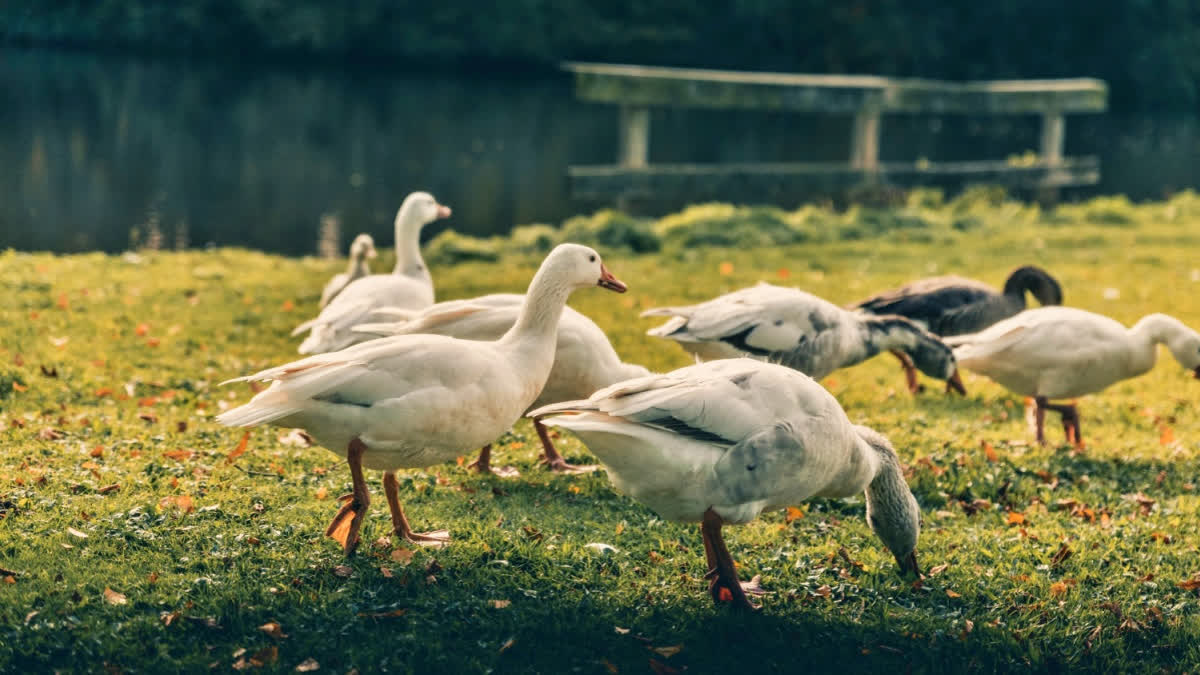In late January 2025, scientists confirmed the first cases of H5N9 bird flu in the U.S. The outbreak was reported at a duck farm in California in November 2024, marking the first time this highly contagious strain has been detected in the country.
According to the latest updates from the US Department of Agriculture (USDA) Animal and Plant Health Inspection Service (APHIS), the virus was confirmed at multiple poultry and dairy farms in more than four states in the US.
Experts say the discovery of H5N9 isn’t surprising since flu viruses constantly change. However, it is still worrying, especially given the ongoing spread of another bird flu strain, H5N1, which has already infected chickens, cows, and even some humans.
“We’ve never seen bird flu spread so widely before. There have been more outbreaks in poultry and duck farms recently, mainly because H5N1 is so common among migrating water birds,” Michael Osterholm, an infectious disease expert at the Center for Infectious Disease Research and Policy (CIDRAP) at University of Minnesota told agencies. These birds (around 40 million in North America) carry the virus and spread it through their droppings. “The virus is everywhere and blowing around, leading to more infections,” he added.
What is H5N9?
H5N9 is a type of bird flu similar to H5N1, but with some differences in its structure. While weaker versions of H5N9 have been found in birds since the 1960s, this is the first time a highly dangerous form has appeared in the US. Worldwide, severe H5N9 outbreaks are rare.
How Did H5N9 Develop?
Flu viruses mutate and swap genes, sometimes creating new strains. Scientists believe H5N9 may have emerged in California’s ducks due to this process, mixing H5N1 with other flu viruses. The World Organization for Animal Health (WOAH) reported that both H5N9 and H5N1 were found at the affected farm. Bird flu is extremely deadly for poultry, and culling is the most effective way to prevent it from spreading to other farms.
Why Is Bird Flu Dangerous?
Scientists worry that bird flu could mutate into a form that spreads easily among humans, potentially leading to a pandemic. Similar mutations caused past flu pandemics, such as the 1918 Spanish flu.
Humans can catch bird flu if the virus enters their eyes, nose, or mouth, or if they inhale infected droplets in the air. While most bird flu viruses don’t spread well between humans, the more they infect animals, the higher the risk of dangerous mutations.
H5N1, for example, has already spread to wild birds, poultry, cows, and even domestic cats. Since it was first discovered, it has infected over 900 people worldwide. In December 2024, a woman in Louisiana became the first person in the US to die from an H5N1 infection.
How Is H5N9 Different from H5N1?
Bird flu viruses are named based on two proteins on their surface: hemagglutinin (H) and neuraminidase (N). H5N9 and H5N1 share the same H protein but have different N proteins, which can affect how the virus spreads and how dangerous it is.
H5N1 is much more common and has been linked to severe infections in both humans and chickens. In contrast, H5N9 is rarely seen in poultry, Eman Anis, a veterinary expert at the University of Pennsylvania said to CIDRAP.
Right now, there is no evidence that H5N9 is a direct threat to humans. The US Centers for Disease Control and Prevention (CDC) considers the risk low but is monitoring the situation closely.
Why Scientists Are Worried
The biggest concern is that H5N9 and H5N1 were found together in the same location. When flu viruses mix, they can create new, more dangerous strains. Since H5N1 is already widespread, the chances of it combining with H5N9 or other bird flu viruses increase. If such a mutation allows the virus to spread easily among humans, it could lead to a serious outbreak.
For now, experts are keeping a close watch on the situation to prevent further spread and reduce risks to both animals and humans.
References:
https://wahis.woah.org/#/in-review/6201
https://www.cdc.gov/bird-flu/about/avian-influenza-type-a.html
https://www.cidrap.umn.edu/avian-influenza-bird-flu/h5n1-strikes-more-poultry-flocks-3-states
Read more:



